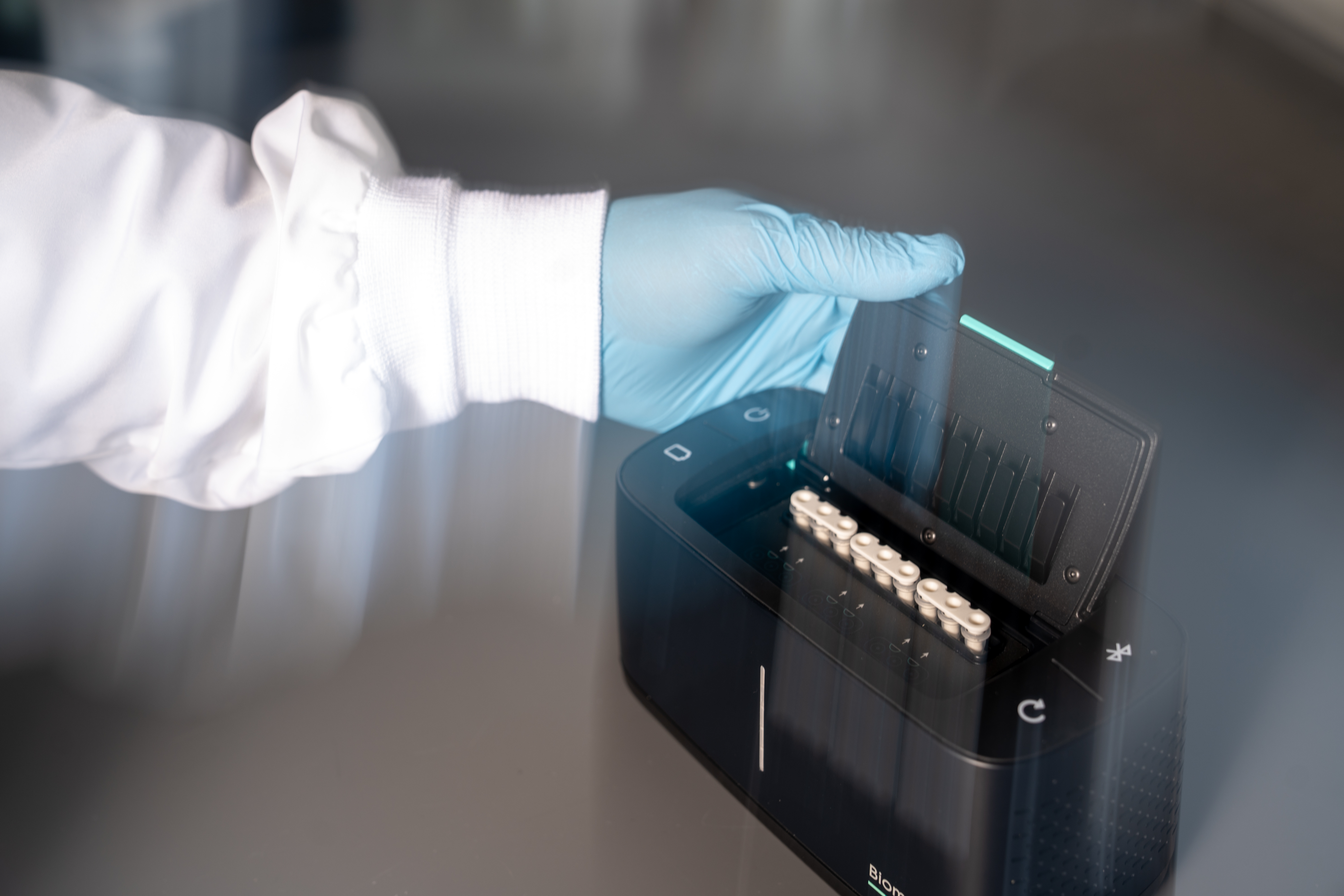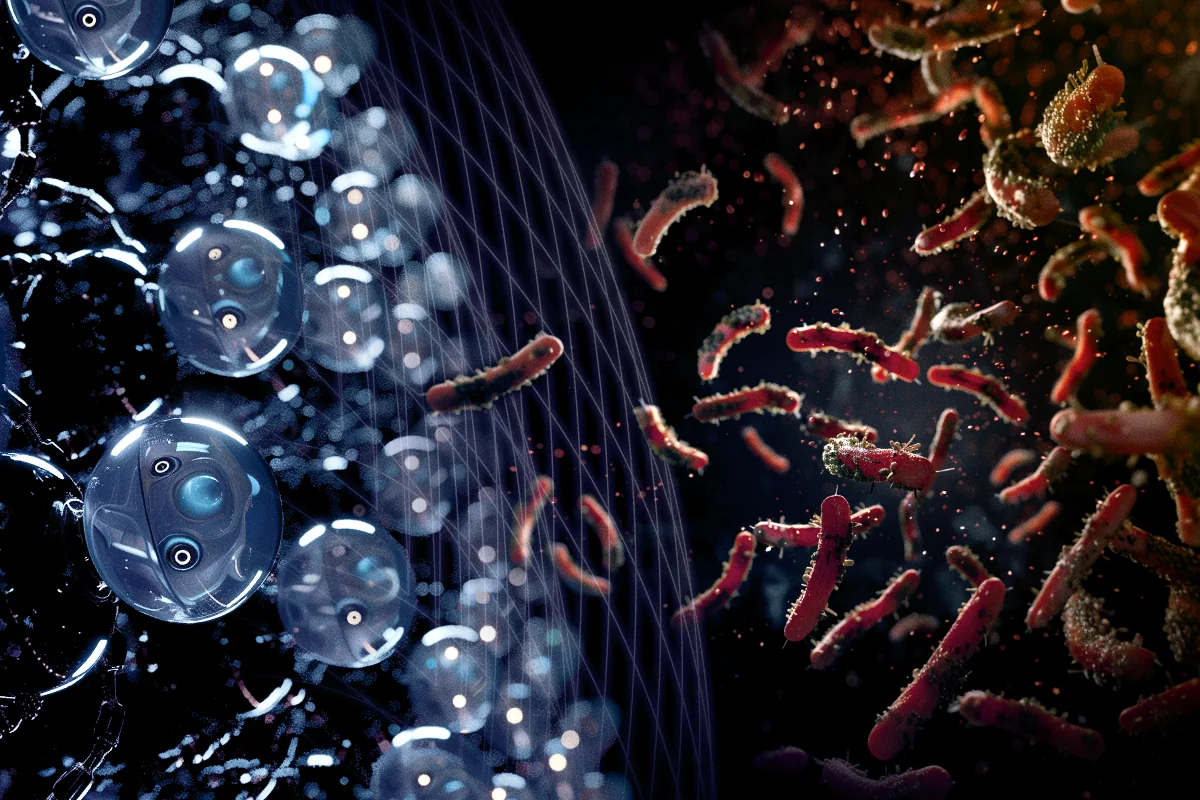
Written By: Biomeme Staff
Take a look inside how a PCR test works, how it is different from a rapid PCR test and how the test is applied to a sample.
COVID has made the general public more familiar with scientific terms and processes than ever before, for better or worse. Some of them we know by now, others we’ve heard but don’t fully understand, and others — like rapid PCR tests — may be newer ideas that could use some explaining. And since COVID testing is still important, even as we’ve returned to a new normal, it’s helpful to understand these concepts.
Antigen testing identifies any proteins that are present from a virus particle; it works better the more of the proteins there are, which means that a significant viral load must be present to detect COVID-19. Think of it as an “after-the-fact” test. The individual already has symptoms, and an antigen test can confirm that it is COVID-19. But because it requires a high volume of viral load to be able to detect the virus, antigen testing can be imprecise.
Studies have shown the accuracy of antigen tests to vary by maker, but that they generally can detect the coronavirus disease 80 percent of the time when two tests are conducted within 24-36 hours of each other. Positive test results from antigen tests are considered highly accurate, but antigen tests are also prone to produce false negative results, and the CDC recommends additional testing to confirm a negative result from an antigen test.
PCR testing has become the preferred test for detecting COVID-19 because of its accuracy and its ability to detect viruses early in asymptomatic people. PCR, which stands for polymerase chain reaction, allows for early detection of the virus, rather than requiring a high volume of the virus to already be present in someone, like antigen tests. This is especially helpful in preventing outbreaks of the virus.
The basic concept behind PCR testing is multiplication. Whereas the antigen test needs a lot of the virus to be present, a PCR test essentially can take a trace amount of the virus and multiply it to levels that are then easily detectable. The PCR process does this by copying a part of the DNA of the virus, enough to verify that the virus is present in the sample. To identify a virus within a sample, the testing process applies those primer “keys” to the sample and heats it (in a lab test) or exposes it to light (in a field test).
This process makes copies of the virus within the sample, though it’s worth noting that making these copies does not mean the test creates more of the actual virus: The SARS genome contains about 30,000 base pairs of DNA, and each PCR test uses about 100 base pairs to identify the virus, so there is no risk of creating more disease.
PCR tests are roughly 95 percent accurate, and unlike antigen tests, they are not prone to false negatives and the CDC advises they do not require additional testing to confirm negative results.
A rapid PCR test is what it sounds like: A faster way to produce a standard PCR test result. The standard PCR test uses a heating process to multiply the DNA in the sample. The rapid PCR test developed by Biomeme uses a portable thermocycler that uses both heat and fluorescent molecules — the addition of fluorescent light allows our real-time PCR technology to detect results while the test is still running, while the portability of the kit enables on-site testing and, therefore, the shortest possible turnaround time for results, which are as accurate as a standard PCR test.
“The real-time PCR thermocycler, like the Biomeme Franklin, has some optics in it and some photo sensors that are detecting that buildup of light,” says Jesse vanWestrienen, Biomeme co-founder and biology lead. “Then we use algorithms to analyze that data to ultimately determine whether that sequence you're trying to amplify is present or not.”
Something like an ordinary nasal sample contains other elements besides the virus, so it must be purified before testing. The Biomeme M1 Sample Prep provides a fast, easy way to clean up a sample without lab equipment. The sample is placed in a lysis buffer to break open the virus at a cellular level. The resulting chemical reaction binds the sample’s DNA or RNA to a glass fiber column, separating the virus material from all the impurities. The column acts as a filter. After a series of washes, the virus DNA/RNA is separated into a solution and is ready to be tested (the chain reaction part of the process).
The purified DNA/RNA solution is added to a lyophilized (freeze-dried) test well. That test well is then placed into the thermocycler. The thermocycler is then started, and the PCR reaction begins that determines whether the virus is present. Biomeme’s Franklin thermocycler has nine wells, allowing users to run up to nine different samples simultaneously. On-site results are available within an hour using Biomeme’s field-tested, disposable kits.
“Almost all PCR that’s been used in the pandemic is real-time PCR,” vanWestrienen says. “What makes it rapid is Biomeme’s technology – very easy to use, field-based kits with a portable thermocycler.”
The COVID-19 pandemic may be behind us, even if COVID-19, itself, hasn’t gone away. But whether it is COVID-19 or a future pandemic we believe that accurate, easy-to-administer, on-site test kits are crucial to preventing outbreaks that hold the potential for adversely affecting our families, communities, and businesses.
Get the latest tips from Biomeme shipped right to your inbox

From the battlefield to the kitchen table and everywhere in between, antibiotic resistance is cropping up in—and being battled—in new and evolving ways. Antibiotic resistance (ABR) fits under the...

Overuse of antibiotics has led to a losing battle against mutating, drug-resistant bacteria. A restrained approach to antibiotic prescription will be key to addressing this massive global health...
401 North Broad St Suite 222 Philadelphia, PA 19108